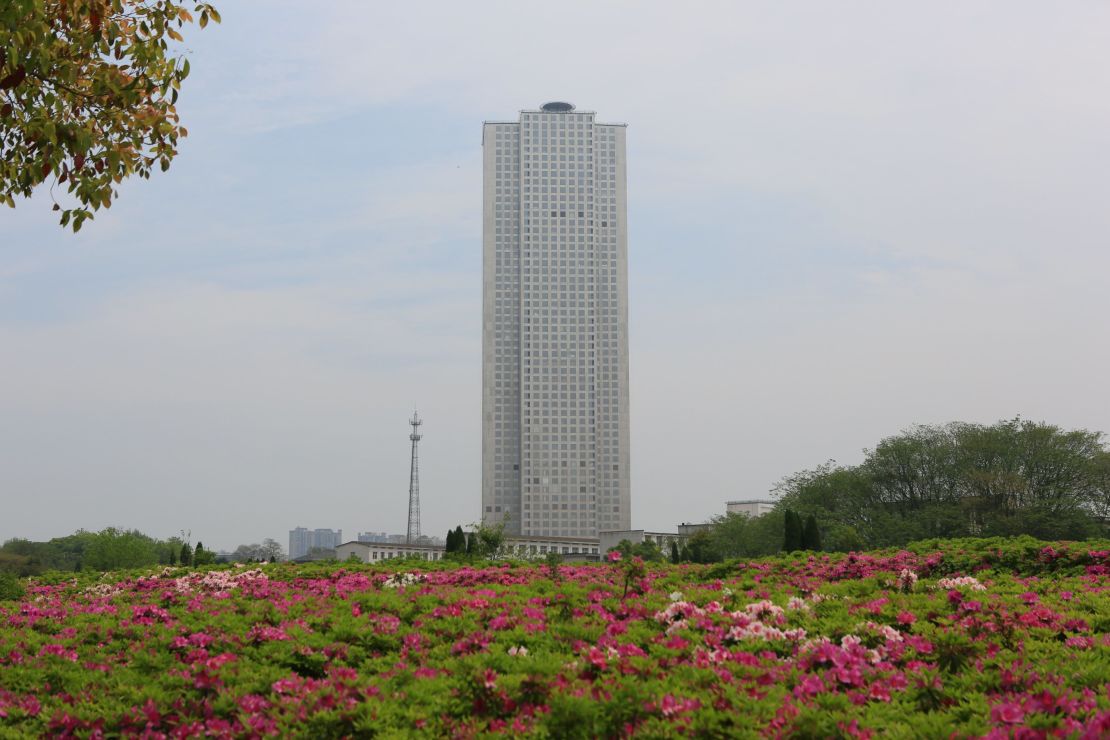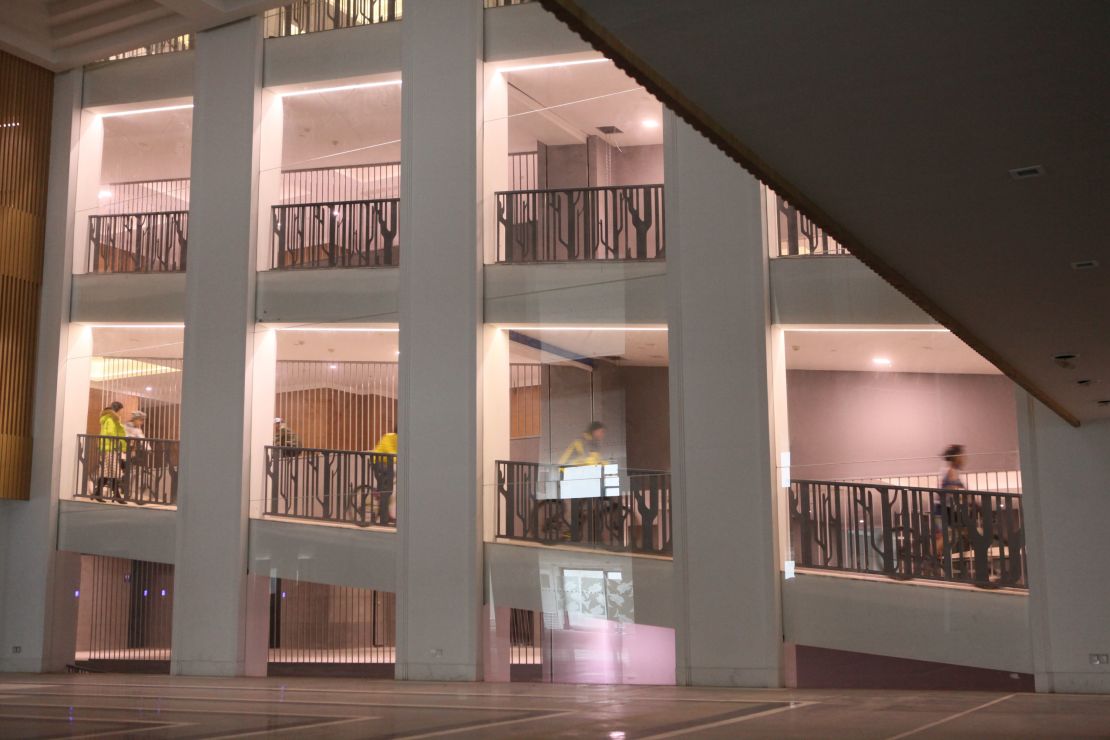At the beginning of February, construction workers gathered at a sparse building site in the city of Changsha, south-central China.
A little under three weeks later, a 57-story skyscraper stood on the very same the spot.
The “Mini Sky City” tower is the work of Broad Sustainable Building, a Chinese firm that specializes in prefabricated construction.
By preparing more than 2,700 modules in a factory for four months before site work began, BSB says it was able to assemble the structure at the rate of three stories per day – like a giant vertical jigsaw pieced together from a minutely detailed set of instructions.
A timelapse video of construction went viral on Chinese websites before finding its way onto many western news sites and broadcast media at the beginning of May.
Need for speed
To put the pace of BSB’s construction into context, it took almost five years to build London’s 37-story Walkie Talkie building which opened in August 2014.
Although some may point out that the Changsha tower is less architecturally distinct than the likes of the 20 Fenchurch Street (the official name of the Walkie Talkie), the Chinese skyscraper remains a considerable structure with more than 800 apartments and office space for 4,000 workers.
The first 20 floors of Mini Sky City were already completed at the end of 2014 before construction was delayed, BSB’s senior vice president Juliet Jiang told CNN by email.
The remaining 37 stories were then assembled between January 31 and February 17 – a mere fraction of the time it took to build the same number of floors that make up the Walkie Talkie in its entirety.

“One hundred percent (of the) parts are factory-made,” Jiang said of BSB’s methods. “We don’t waste any materials, no one is idle in the workshop or on site. We have very good planning.”
Jiang said that the processes employed by the firm are also far more cost effective, environmentally friendly and lead to less disruption in cities during construction.
BSB is now reportedly keen to put its techniques further to the test by seeking permission to build an 838-meter-tall (2,749 ft) skyscraper in Changsha, a project first announced in 2013.
If built in the stated ambitious 10 month time-frame, the “Sky City” structure would be the tallest building in the world until the Kingdom Tower in Jeddah, Saudi Arabia, is completed.
Yet a 2014 article in the China Daily newspaper stated experts believed the delay in construction likely meant BSB had previously failed safety inspections.
The official newspaper of China’s ruling Communist Party, The People’s Daily, also reportedly criticized the project on its Weibo feed as a display of “blind worship for ultrahigh skyscrapers.”
BSB chairman Zhang Yue even published an open letter answering criticisms of the proposed building.
Concerns around potential future projects aside, Jiang was keen to point the potential for exporting BSB’s building techniques to locations outside Changsha.
In China the need to build fast is acute. The world’s most populous nation is home to 1.4 billion people and has experienced an exodus from rural areas to its urban centers in recent decades.
Just 31% of China’s population lived in cities in 1995, according to World Bank data. By 2013 the urban population had risen to 53%, equating to more than 300 million extra people living in the country’s cities.
That figure would likely have been even greater were it not for China’s “hukou” system which limits migrants’ access to social services such as education and health care when away from their home region.

“We need this kind of building,” Jiang said. “Not only for people’s life (but) also for the environment.”
BSB believes this is a message it can take around the globe. According to its own website, the wider Broad group has products and operations in 70 countries – although many of these are related the firm’s other business interests in energy, heating and cooling and not construction.
The company already boasts of a 15-story hotel assembled in six days and a 30-story hotel in 15 days among its other Chinese achievements.
“What we are doing now is to sell buildings worldwide,” Jiang continued. “We make them in China, ship them (across the globe).”
Absolutely pre-fabulous?
According to Austin Williams, associate professor in architecture at Xi’an Jiaotong-Liverpool University in the city of Suzhou, fast-build projects like Mini Sky City could be extremely useful for housing needs in other parts of the world.
Urbanization is already happening at a rapid rate across many parts of Asia and Africa.
More than 2.5 billion people will be added to the world’s urban population by 2050, according to the U.N. 2014 World Urbanization Prospects report. And nearly 90% of this growth is expected to be concentrated in Asian and African cities.
Williams stated that because BSB’s prefabricated method is not a “cultural architectural form” – a style which takes on a distinct national or cultural identity – it isn’t something that has to be exclusive to China.
Yet while Mini Sky City looks impressive, Williams adds much of the finer detail regarding the project is hard to judge without accessing the site which he is yet to visit.
Then there’s the more general issues surrounding planning and construction that are unique to China. On the plus side “people need houses. China builds houses. That’s a simple equation,” Williams said.
But on the down side there is “over-supply and also Maoist planned supply where no one really assesses what type of housing is needed,” he added. “There is simply a quota of housing to be built.”
China has become familiar with stories of ghost cities in recent years, a phenomenon not helped by inefficient building programs and lack of relevant regulation.
These are concerns shared by Ryan E. Smith, associate professor and director of the Integrated Technology in Architecture Center at the University of Utah and an expert in pre-fabricated construction.
Smith said “I’ve never seen anything go up that fast in my life” when shown the timelapse video of Mini-Sky City.

Yet he questions whether the labor and safety practices employed during its construction were as stringent as they would be in many Western nations given the sheer speed of assembly.
A detailed company slideshow from BSB’s Sky City project, however, states that the company’s buildings are all constructed by skilled “professional workers” and not “day laborers.”
Smith was once offered a rare invite to the Broad Group headquarters to view the company’s pre-fabrication processes up close.
Prior commitments meant he had to decline the offer. But he said industry contacts who made the trip reported back a “very polished experience” that left as many questions as answers as to how BSB manages to do what it does at such velocity.
This is perhaps understandable given BSB is unlikely to give away its trade secrets.
But it also makes it difficult for Smith to leave all skepticism fully behind, especially given the sheer speed of construction which nobody else seems able to compete with.
Napoleon and the pyramid
Perhaps the most eye-catching reports relayed to Smith, however, were the “pretty wild” decor tastes of the company’s chairman, Zhang Yue.
A detailed piece from BBC News recently referred to descriptions of Mr Zhang as “the Chinese Steve Jobs.” It also described how the Broad Group HQ contained a replica of Buckingham Palace fronted by a statue of Napoleon Bonaparte as well as a separate 40 meter (131ft) high gold pyramid structure.
But while incredulous about the construction processes, Smith does not doubt the expertise BSB is fine-tuning in its factories.
“The work in the factory seems to be of the highest manufacturing optimization as anywhere in the world,” Smith said.
“They’re producing floor assemblies and componentry and all of that seems to be very well coordinated and shipped onto a truck and arrives on site on time otherwise how do you get it in and out on time.”
“I think that’s probably the biggest innovation I see,” he added. “Despite all the stuff about on-site assembly.”


